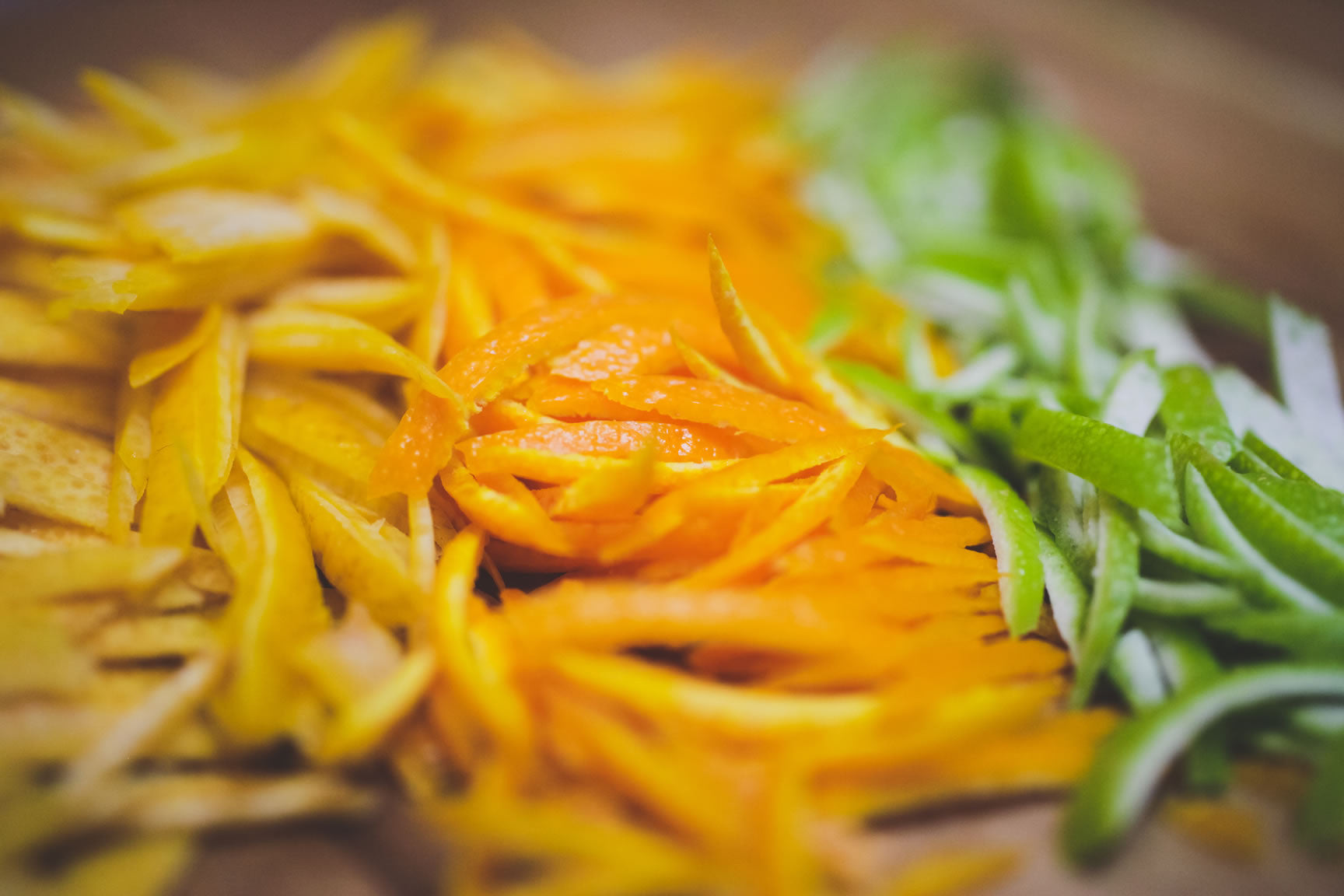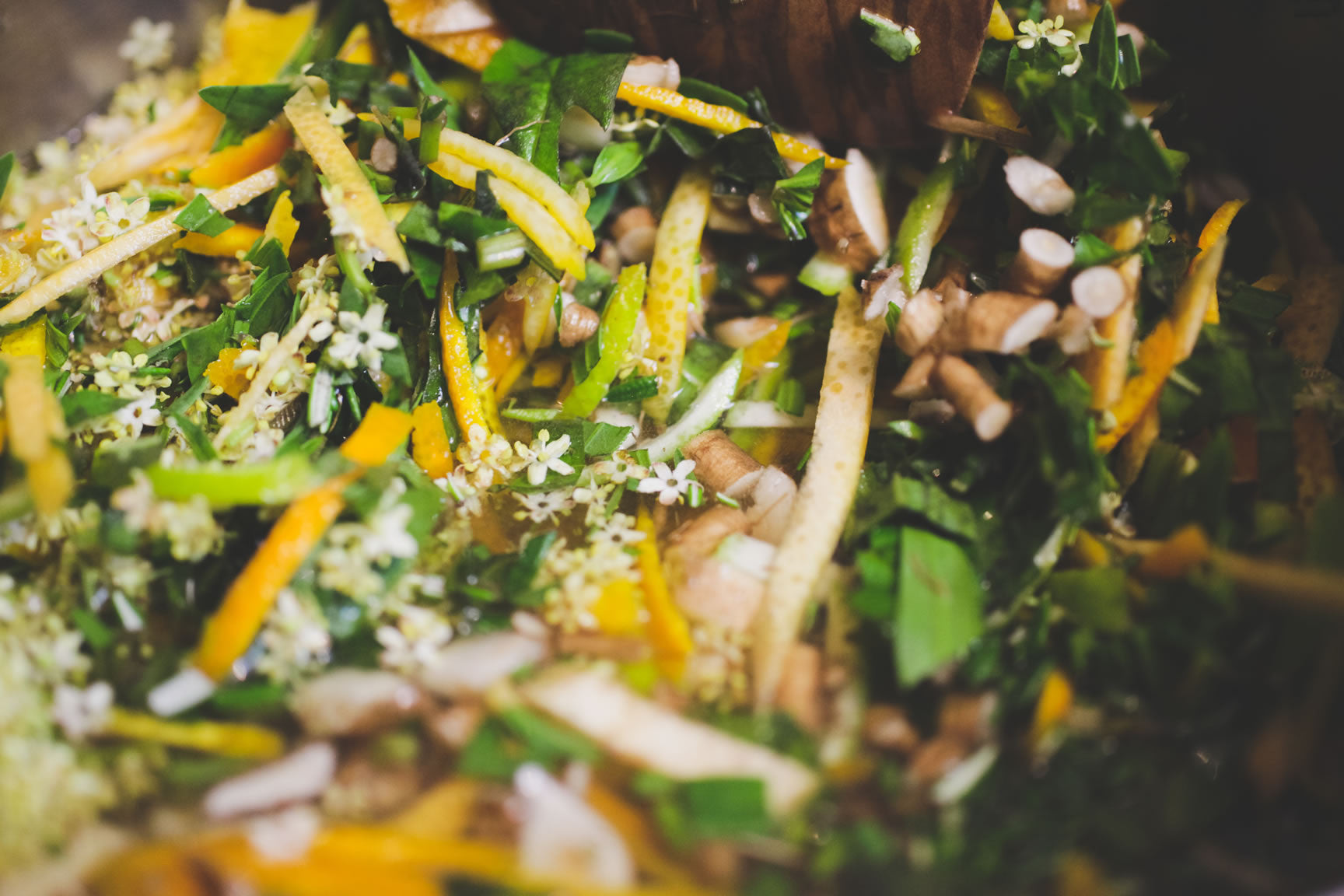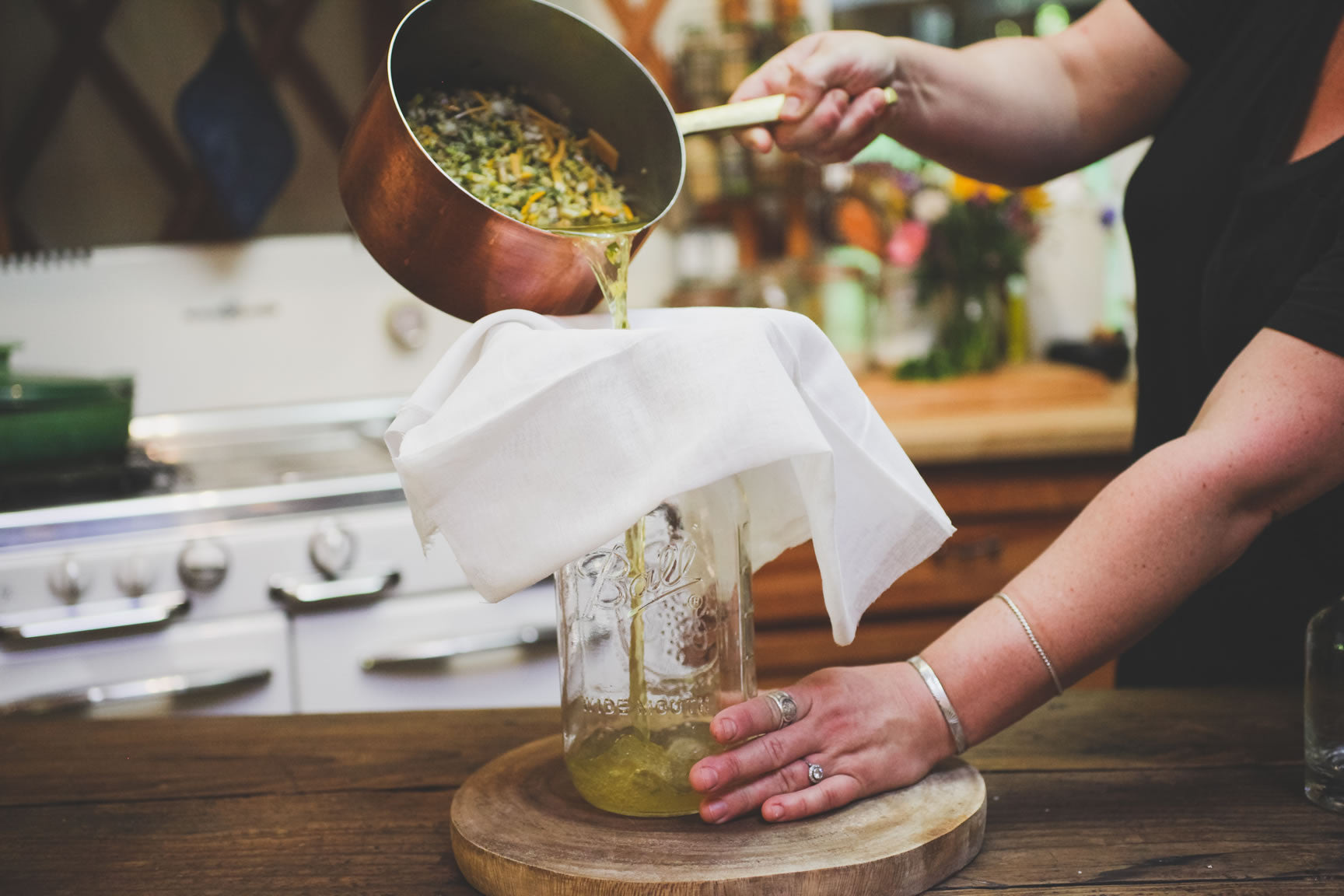- Continue Shopping
- Your Cart is Empty
Mountain Feed and The Golden Bear Tonic

What You'll Need
Equipment
- large saucepan
- good kitchen knife and clean cutting surface
- half gallon mason jar
- or mesh strainer
- air tight bottle for storage
- spoon for stirring
- bottling funnel
- canning funnel
- measuring cups and spoons
Ingredients
- 1 each lemon, orange, grapefruit, and lime
- 1 cup chopped dandelion root
- 1/4 cup fresh elderflowers, green parts removed
- 1/4 cup fresh lavender flower stalks
- 1/4 cup hyssop, chopped
- 1/4 cup orange mint, chopped
- 1/4 cup lemon verbena, chopped
- 3 tablespoons rosemary, chopped
- 1 quart water
- 2 cups sugar
- 3 tablespoons citric acid (optional)
We were pleased as punch to spend a day recently, with Katie Shea of Golden Bear Bitters. While she didn’t give us her secret, Good Food Award-winning recipe EXACTLY, she did walk us through the steps she uses to create her seasonal tonics. The recipe for the tonic changed before our eyes, as she spied a bunch of budding lavender and some young rosemary tips in the garden as we walked to the kitchen. Snip, snip! Into the harvest basket, they went. While the constraints of creating a consistent product on a commercial scale require the recipe to be predictable and repeatable, with set quantities of each specific ingredient, the home gardener/cook is free to pluck, as we did that morning, the freshest and the loveliest herbs and flowers that call on that particular day. “I like to work with whatever is in its perfect state, “ Katie mused as we set to chopping. “Picking things at their peak flavor and vibrancy. I might choose to add fruits, like strawberries, in the summer, for a hint of light, fruity flavor.” We might have added tarragon to this batch, or the first of the basil if there was any to be spared, or the tips of our local Douglas fir. The tonics that Katie creates under her Golden Bear line also contain wildcrafted ingredients, such as bay laurel, and wild sage that she forages near her home in rural Carmel Valley.
We used the tonic in refreshing mocktails, and classic cocktails like a gin and tonic; even though the tonic we created here is not carbonated, as we have grown to expect in a quinine-based tonic water, we didn’t miss the bubbles at all; the bitterness and bright acidity in the tonic syrup were effervescent enough. I asked Katie about how she defines a tonic.
"For my products and the ‘tonic' recipes, I create for Golden Bear Bitters, I kind of merged the two definitions [of tonic and tonic water] because I have always believed that enjoying a beverage, whether with or without spirits and drinking for your health should not be mutually exclusive. A tonic can be defined as a medicinal substance taken to give a feeling of well-being and restoration. Tonic Water, as a bitter carbonated soft drink made with quinine, used especially as a mixer with gin or other liquors.”
Tonic water as we know it today was originally used as a stimulant of appetite and digestion; it’s only because of the twisting, turning ways that history takes as it unfolds behind us, that we have come to know tonic water in the very narrow definition that it now occupies.
We’ve been missing out.
The bitterness that we expect in a tonic water comes here from the addition of dandelion root, and from the peels of citrus fruit, and from the lavender stalks, as well.( If you remember a few months back in the journal, we talked all about the magical/practical properties of bitterness, as a digestive aid and stimulant. We went on and on about how delicious it can be, too…)
This the syrup we made, one early summer morning. The sun was shining on the leaves, the birds were singing in the trees outside, and the smell that rose from the pot as we warmed the fresh herbs and citrus was an olfactory snapshot of everything growing nearby that was fresh and hale and green and good.
Then we got to drink it.
Makes about 3 pints
Directions
Chop the fresh herbs finely.
Dice the dandelion root into small rounds.

Remove the rind from the citrus in wide strips, and slice the strips into matchsticks.

 Combine the chopped herbs, elderflowers and the citrus rinds in a medium saucepot with 1-quart water. Heat the mixture over medium heat, until it just about to boil. Remove from the heat before a full boil is reached and cover for at least 30 minutes.
Combine the chopped herbs, elderflowers and the citrus rinds in a medium saucepot with 1-quart water. Heat the mixture over medium heat, until it just about to boil. Remove from the heat before a full boil is reached and cover for at least 30 minutes.

Meanwhile, juice the citrus. You should have about 1 1/2 cups of citrus juice. 3 TBS of citric acid may be added to the syrup at this time if a longer shelf life is desired.

Pour the juice into a saucepan and add the sugar. Bring to a boil, stirring to make sure the sugar is dissolved, to make a citrus syrup. Remove from heat and allow the syrup to cool.

Over a large jar, such as this Ball half-gallon, strain the herbal mixture through cheesecloth.
 When all the liquid is poured through, gather the cheesecloth and squeeze the herbs to release the last of the flavors into the infusion.
When all the liquid is poured through, gather the cheesecloth and squeeze the herbs to release the last of the flavors into the infusion.
 Re-line the funnel with the cheesecloth again, and pour the citrus syrup through, to mix with the herbal infusion below.
Re-line the funnel with the cheesecloth again, and pour the citrus syrup through, to mix with the herbal infusion below.
 Stir, or shake to combine.
Stir, or shake to combine.

Using a bottling funnel, pour the combined mixture into the bottle you will be storing it in. Here, we used this bar-top bottle.

Store the syrup in the refrigerator for optimum freshness, where it will keep for several weeks. The addition of citric acid will extend the shelf life, but this product will ferment if left at room temperatures, so keep it cool, or drink it up! (This should not be a problem.)


Over to You
It’s part of our mission here at Mountain Feed to help you make delicious, sustainable, homemade food more often. Stop by and say hello on Facebook, Twitter, Instagram or Pinterest. Or, as always, you can do it the old fashioned way and come by the store to speak with one of our in-house experts.
